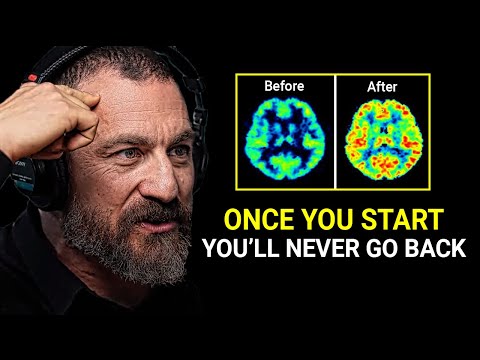Repetition and task bracketing are powerful tools for forming and maintaining new habits.
Key insights
-
💪 Habits make up 70% of our waking behavior, so forming good habits can have a significant impact on our lives.
-
🧠 Small changes occur in the cognitive and neural mechanisms with each repetition of a habit, which can be used to form and maintain habits or break them.
-
🧠 Task bracketing is a powerful tool for acquiring and sticking to new habits, as it activates the neural circuits necessary for learning and breaking habits.
-
🧠 Our brain's basal ganglia circuits play a crucial role in both action execution and suppression, affecting our ability to do or not do certain things.
-
💡The neural circuits for task bracketing determine whether a habit will be context dependent or not, making it likely for us to carry out certain behaviors even in unfavorable circumstances.
-
🧠 By orienting your nervous system towards the execution of a given habit, you can prime your brain and body to execute that habit, making it easier to adopt or break a habit.
-
💪Positive anticipation and subjective rewards can help establish and maintain healthy habits, even if they are initially difficult.
-
🧠 By linking a bad behavior to a good behavior, you can recruit other neural circuits and create a double habit that can dismantle the sequence of firing associated with the bad behavior.
Questions to inspire discussion
-
How long does it take to form a habit?
—It takes 18-254 days to form a habit, depending on the individual.
-
What changes occur in cognitive and neural mechanisms with habit repetition?
—Small changes occur in cognitive and neural mechanisms with each repetition of a habit to help form and maintain new habits and overcome limbic friction.
-
Do visualization exercises need to be done in a specific position?
—No, visualization exercises don't need to be done with eyes closed in a lotus position.
-
What is task bracketing?
—Task bracketing is a powerful tool for acquiring and sticking to new habits.
-
Which neural circuits are involved in task bracketing?
—Task bracketing involves particular neural circuits within the basal ganglia that mark the initiation and termination of a habit.
-
How can engaging the dorsolateral striatum help with habit execution?
—Engaging the dorsolateral striatum and thinking about the events that precede and follow a habit can help orient your nervous system towards executing a given habit.
-
How can a positive habit replace a bad habit?
—Engaging in a positive habit immediately after a bad habit can be an effective way to replace the bad habit.
-
How can creating a double habit be helpful?
—Creating a double habit of starting with a bad habit and ending with a good habit can help recognize when heading towards the bad habit.
-
What should be done after performing a bad habit?
—Exit whatever you are doing and perform a new positive habit in the immediate period afterwards.
------------------------------------- 0:11:13 2023-11-14T10:06:41Z

